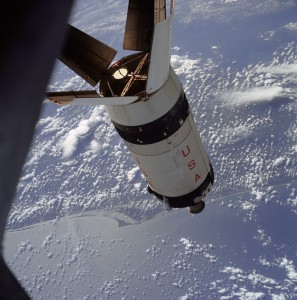
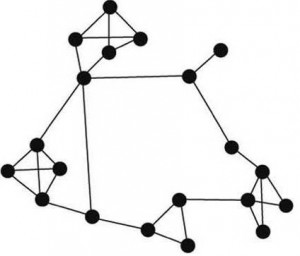
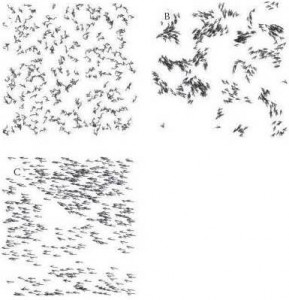
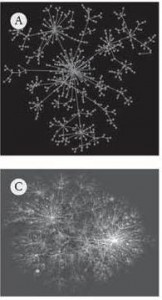
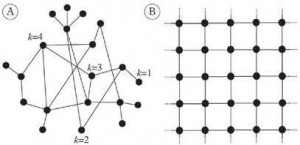
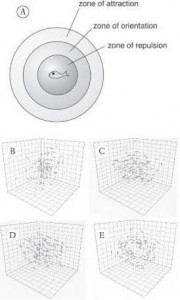
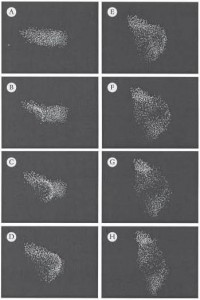
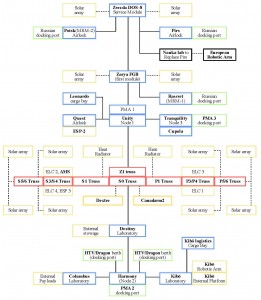
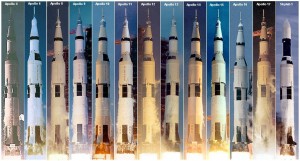
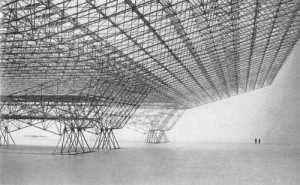
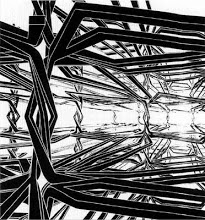
Previously I presented an interest in the design of an orbital platform that would act as something between an industrial town and an airport. I want to present this platform as an interface location, a confluence of information and materials in an exchange amongst locations on Earth, and between the planet and colonies off in space. This site offers much potential, as being an interchange that is simultaneously a static place, yet is always moving relative to the surface, allowing for infinite connections to land and space. It would be a place of great interchange, where many flows must cross and meet, but never slow or end.
So far, the model for adaptable network constructs has always resided within some form of physical framework. As a prime example, Cedric Price’s Fun Palace attempted to be an architecture built of people, adapting and forming to the social space created by the crowds. Unfortunately, this flexibility required a massive structural framework, to move its pieces around. This scaffold limited the size and form of the emergent constructs, and bounded the zone of simulated freedom to the foundation pad. I cannot imagine the users actually being able to operate the heavy cranes required to move the pieces around with any sense of freedom. In addition, the pieces available for creating spaces were always the same, just repeated and reorganized. The Fun Palace could easily be characterized as very similar system to today’s industrial design culture, where replaceable and interchangeable parts can add variation to the wide, although limited, set of consumption choices. The spatial variations within the Palace could have been generated (accurately simulated) by a static form building designed around a fluid and irregular diagram (such as the Berlin Free University).
My desire to focus my efforts on an earth-orbital space station carries with it some precedents. The adaptable modular design approach is a technique that has been deployed in space flight since the beginning. For example, the first space station put into orbit by the US, Skylab was an adapted module from the Saturn rocket series. The same module, known as the S-IVB, was deployed as the top stage on three different versions of the Saturn rocket series, and with Saturn V, carried the Apollo LEM into space. Three of those same Apollo units, after releasing their cargoes, trailed behind the manned missions to act as deep impact test units, crashing into the surface of the moon to deliver geologic data. Skylab was built from an S-IVB module, and rode atop the last Saturn V rocket into orbit. The International Space Station currently employs a modular unit design, learning from the lessons of its predecessors. The station is composed of around 35 payload units of varying sizes. These units are designed to each have a different function, and to be added to, or replaced to form an architecture that can adapt to future needs. It still exists as a structured unit, much like the Fun Palace, held together and supplied by a scaffold, with a limited amount of resource gathering systems.
This kind of scaffold limitation isn’t uncommon, even in today’s examples of network architecture. Philip Ball describes scale-less networks that can infinitely grow according to their formulae (a notion mirrored by David Reed in his analysis and postulations for viral communication networks). Airports, no matter how interconnected and complex, are still limited by the number of runways. Certain models of networks from graph theory involve power laws to define the average number of connections, and the way that those connections form centers, peripheries, and communities. Unfortunately, this model only typically works when it isn’t applied to physical systems. Internet and communications networks can be modeled this way because they don’t operate within the confines of physical space or resource, but in real life long distance connections are costly and challenging to route, especially when that network is limited to a base plane (Ball uses electrical networks as an example, where shortcuts aren’t feasible, and the network is projected onto the two-dimensional map, limiting it to a more rudimentary grid model).
An advantage of operating in orbit is the lack of a base plane; the network can operate in three dimensions, allowing for more shortcut connections, making the connection diagram more interconnected and more complex. According to the most complex models of social networks from graph theory, scale-free networks have a strong tendency to generate closeness of all nodes through escalation. The notion of the rich getting richer holds true here, where certain network nodes grow to have enormous numbers of connections, while others maintain just a few. Previous attempts to formalize network architecture has not accurately modeled this tendency. Buckminster Fuller’s space frames and connectable units were always encumbered by geometry limiting the number of connections, limiting the network to a relative homogeneity. How can physical entities allow for real connective network richness?
Philip Ball offers a solution for this too. The analysis of swarms and flocks appears on one level to be a separate branch of analysis, but what if it were a model for network reorganization? Networks can be characterized by a relative local lack of intelligence, a reliance on the nearby connections to generate and move information. The same is true in swarms, where each unit follows a surprisingly simple set of behaviors based on the actions of its neighbors. When combined could these corresponding analyses form a network body in constant flux? In this situation, the graph theory diagram may be relatively simplistic due to its physical constraints, but each drawing may only be a snapshot in time. Layering of the diagram, showing the rule set of each participant (according to swarm theory) and the notation of the tendency of the swarm as a group (referencing Stan Allen’s understanding of allographic diagramming of choreography) could define the network not as a drawing of a physical form hanging in space, but could only become static within its non-prescriptive choreography diagrams. Ball’s example of a swarm splitting to clear the way of a predator could correspond to network community variations; units could constantly reorganize into mutually beneficial community groupings, only to dissipate and reorganize again. Ball’s description of the way digital fish swarms make group decisions could have effects on large-scale missions.
This behavior can be seen on multiple scales to create real variation within a living network location. Let me outline a living network space station:
I want to postulate three scales of systems, each emerging as a resultant of a group of units in the smaller scale. The smallest scale would be human: each person equipped with an interface device (not too different from the one outlined in my previous post) that could help facilitate community decision making processes based on swarm logic. Humans, partnered with their individual interface units, would live in community units. These units form the second species. The population inside could vary, but roughly hover around the population of a small town. The medium unit would be a physical container, but would be highly variable in its abilities, as its inhabitants could have the ability to modify it. The behavior of the medium species would be a black-box (“spokesperson” from Bruno Latour Actor Network Theory) representation of the collective attitude of the contained residents. Just as all humans are one species, but vary widely in their roles in the society, so would the medium module vary in its function, attitude, connectivity, and transience based on an aggregate of the contained population. The interface unit for each person could act in a secondary way, allowing an individual to leave a medium module and join a new one if he or she is not content with the community’s decisions. This allows units to change over time, new populations moving in to transform the neighborhood (something seen today in gentrifying or evolving urban neighborhoods).
The medium units could behave with a wide variety of personalities, this time manifesting in a physical network. The placement of the site as a boundary condition between the planet and the potential for resources coming in from beyond demands that material flows be of great importance to behavior of the medium units. Assume for a moment that a shipment of a raw material might be coming in from space. A swarm community might arise to meet it based on mutual benefit. It could form together into a tightly connected grouping around productivity. Certain units could meet up with the carrier to offer to manufacture the material into something that could be used or sold. Multiple material cargo units might also gravitate to support manufacturing units. Units that may occupy a more service-based part of society could join the cluster to offer supplies, comforts and entertainment to the inhabitants of the tightly grouped units. External flows, like sales of products could form the lesser connections to other community grouping that may form around different functions.
These larger functions are the third and biggest species. When one views a network community as having a singular mission (again a black-boxing of a socially arranged group), one can begin to isolate this group as an entity with connections to other entities. Groupings could arrange as mentioned before to refine raw materials, to exchange services and stocks, or even to collect together with enough supplies and valuable materials to decide to depart the orbital cluster to go out into interplanetary space to bring goods to another cluster.
A crucial part of graph theory in defining networks is the number of connections relative to the number of nodes. Just as the smallest species would be a linking of a human with an interface supplementary unit, the medium unit would demand independent connection units. These units could be unmanned, and called upon when a medium unit wishes to dock. The inclusion of these units as independent objects would be beneficial in three ways. First, moving connection units could control the number of connections available to a population, that would in turn define the shape of the network graph at all given points in time to generate some desired behavior. Limitation of connections could also help prevent epidemic from spreading through an overly-connected network. Second, independent connections would free the medium units from the constraints of geometry in making their connections. A fluid hull membrane could be punctured by connectors in differing numbers and organizations to allow for network variation. Third, a lack of available connections could force members of the swarm to leave, perhaps forcing some units to fly down to the plant to connect with a surface city, thus bringing new individuals and ideas into the swarm system.